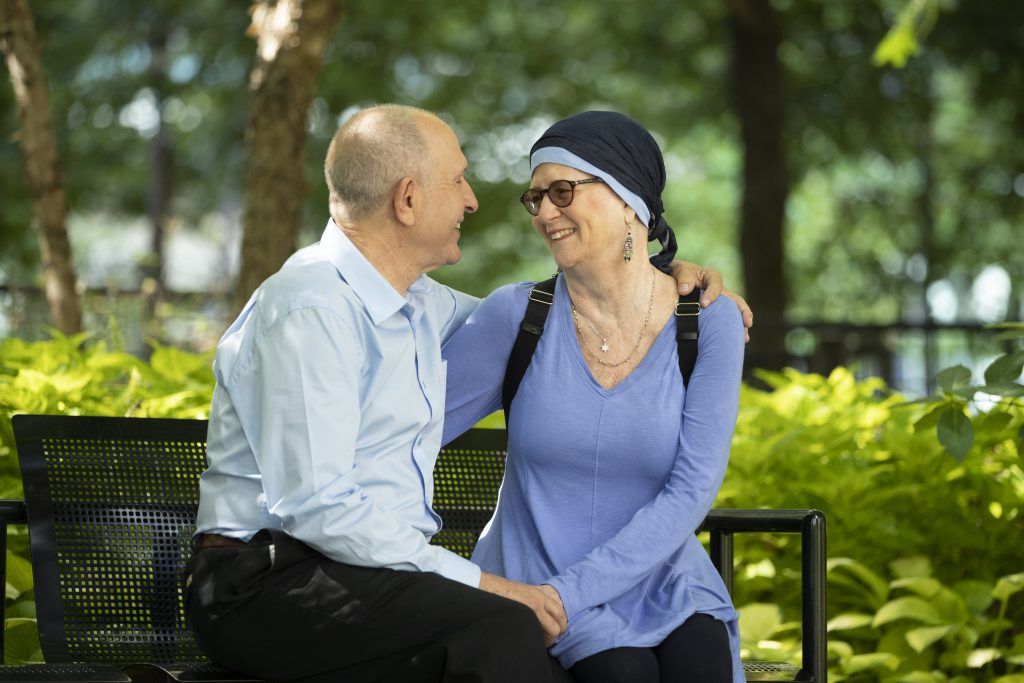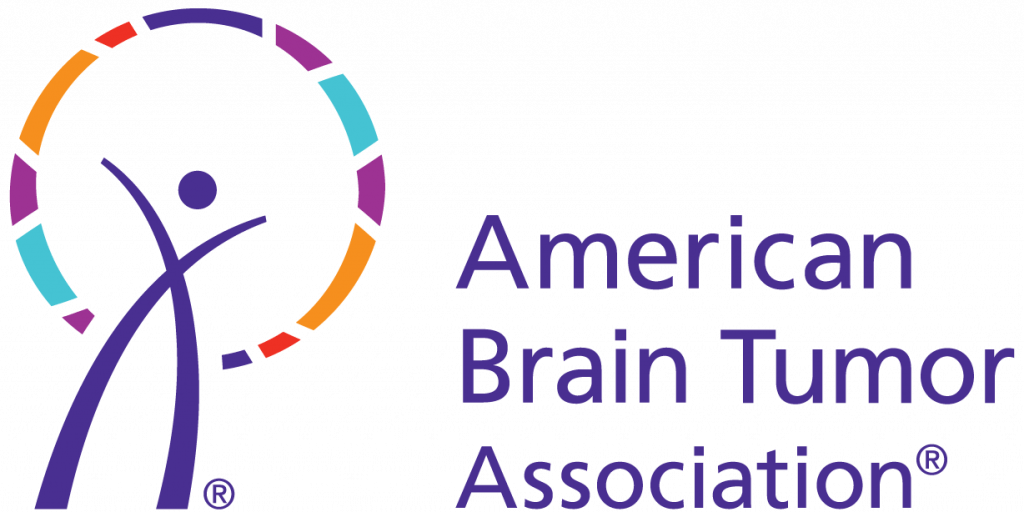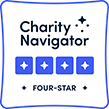Sponsored Content:
This content is not an endorsement from the ABTA.
Sponsored by Novocure® *

Larry loved his fiery, redheaded wife, Lynn. But when Lynn was diagnosed with glioblastoma (GBM), he knew things had to change. It was his turn to take care of his wife and build a bigger boat for them both. In recognition of Caregiver Awareness Month, he wants to share his story.
Accepting and Enjoying Our New Normal
In my family, our philosophy is that only one person can be sick at a time and typically, it was me. But when my wife Lynn, a fiery, strong redhead, was diagnosed with GBM, we had to learn a new way of being a team.
Lynn had a month-long headache and an MRI showed she had a brain tumor. Before we could attend an appointment at a major city hospital, Lynn had a seizure. Her biopsy showed GBM, but we didn’t have time to feel sorry for ourselves. We had to keep moving forward.
It was time for change. Lynn’s fiery red hair had to go, but she didn’t mourn for it. Instead, she threw a “Make Lynn Bald Party” and invited all her friends.
We have a sign in our living room that reads “We’re gonna need a bigger boat,” meaning no matter how big the problem, we can build a bigger solution. That’s exactly what we had to do now.
Building a bigger boat involved creating a larger community of friends and trusted healthcare professionals to help get us through this difficult diagnosis. Now, I’m not just Lynn’s husband or caregiver; I am part of her treatment team and her sherpa.
 It was my turn to take care of Lynn and I did whatever I could so Lynn could focus on getting the treatment she needed.
It was my turn to take care of Lynn and I did whatever I could so Lynn could focus on getting the treatment she needed.
As our plan evolved with her needs, Lynn’s doctor told us about Optune and we decided it was the right decision for us.
Then our nCompass™ Device Support Specialist (DSS) came to our home to explain the process and demonstrated how to place the arrays. I took notes because I knew it would be my responsibility to change the arrays going forward.
It seemed overwhelming at first, but once we started, I wasn’t nervous because I knew it had to be done. We keep a sense of humor and remain positive about the treatment.
As an integral part of Lynn’s treatment team, I know I need to take care of myself as well. That means healthy eating, exercising, seeing friends, and believing that positivity in all parts of life can get you through anything.
More than two years later, and we continue to adapt to our new normal. Lynn is still that fiery redhead—even without the red hair—and super positive.
Although we’ve had to adapt some of our activities, we are happy with our new life. We are sailing along in the new boat that we have built.
*Lynn is an Optune user and a Patient Ambassador. Larry is a Caregiver Ambassador.
What is Optune® approved to treat?
Optune is a wearable, portable, FDA-approved device indicated to treat a type of brain cancer called glioblastoma multiforme (GBM) in adult patients 22 years of age or older.
Newly diagnosed GBM
If you have newly diagnosed GBM, Optune is used together with a chemotherapy called temozolomide (TMZ) if:
- Your cancer is confirmed by your healthcare professional AND
- You have had surgery to remove as much of the tumor as possible
Recurrent GBM
If your tumor has come back, Optune can be used alone as an alternative to standard medical therapy if:
- You have tried surgery and radiation and they did not work or are no longer working AND
- You have tried chemotherapy and your GBM has been confirmed by your healthcare professional
Who should not use Optune?
Optune is not for everyone. Talk to your doctor if you have:
- An implanted medical device (programmable shunt), skull defect (missing bone with no replacement), or bullet Optune has not been tested in people with implanted electronic devices, which may cause the devices not to work properly, and Optune has not been tested in people with skull defects or bullet fragments, which may cause Optune not to work properly
- A known sensitivity to conductive hydrogels (the gel on the arrays placed on the scalp like the ones used on EKGs). When Optune comes into contact with the skin, it may cause more redness and itching or may rarely cause a life-threatening allergic reaction
Do not use Optune if you are pregnant or are planning to become pregnant. It is not known if Optune is safe or effective during pregnancy.
What should I know before using Optune?
Optune should only be used after receiving training from qualified personnel, such as your doctor, a nurse, or other medical staff who have completed a training course given by Novocure®, the maker of Optune.
- Do not use any parts that did not come with the Optune Treatment Kit sent to you by Novocure or given to you by your doctor
- Do not get the device or transducer arrays wet
- If you have an underlying serious skin condition on the scalp, discuss with your doctor whether this may prevent or temporarily interfere with Optune treatment
What are the possible side effects of Optune?
Most common side effects of Optune when used together with chemotherapy (temozolomide, or TMZ) were low blood platelet count, nausea, constipation, vomiting, tiredness, scalp irritation from the device, headache, seizure, and depression. The most common side effects when using Optune alone were scalp irritation (redness and itchiness) and headache. Other side effects were malaise, muscle twitching, fall and skin ulcers. Talk to your doctor if you have any of these side effects or questions.
Please visit Optune.com/Safety for the Optune Instructions For Use (IFU) for complete information regarding the device’s indications, contraindications, warnings, and precautions.








